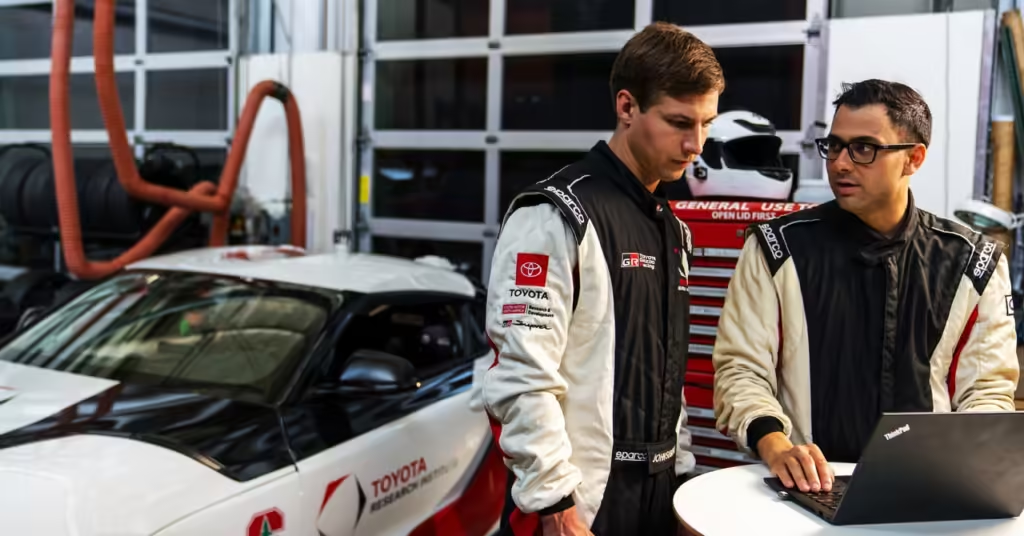Losing traction while driving at high speeds is generally very bad news, so scientists at Toyota Research Institute and Stanford University have developed two self-driving cars that use artificial intelligence to lose traction in a controlled way (a maneuver known as “drifting”), pushing the boundaries of autonomous driving.
In May, two self-driving cars performed a daredevil stunt known as a tandem drift at Thunderhill Raceway Park in Willows, Calif. A promotional video shows the two cars roaring around the track, just feet apart from each other, after their human drivers let go of controls.
Chris Gerdes, the Stanford professor who led the project, told WIRED that the technology developed for the feat could eventually help with future driver-assistance systems. “One of the things we’re looking at is, can it perform as well as the best human drivers?” Gerdes said.
Future driver-assistance systems could use the algorithms tested on the California track to step in when a driver loses control and steer the vehicle out of trouble, much like a stunt driver might. “What we’ve done here can be expanded to tackle bigger problems, like autonomous driving in urban areas,” Gerdes says.
While the project is a spectacular demonstration of high-speed autonomous driving, self-driving cars are still far from perfect. After a decade of promises and hype, taxis are now able to operate without drivers in limited circumstances. But the vehicles are still prone to getting stuck and may require remote assistance.
Toyota and Stanford University researchers modified two GR Supra sports cars, outfitting them with computers and sensors that track the road and other vehicles, as well as suspension and other characteristics, and developed algorithms that combine advanced mathematical models of tire and track characteristics with machine learning to enable the cars to master the art of drifting.
Ming Lin, a professor of autonomous driving at the University of Maryland, says the research is an exciting advancement for self-driving cars operating in extreme conditions. “One of the biggest challenges for self-driving cars is to drive safely in the rain, snow, or fog, or in poorly lit conditions at night,” Lin says.
Lin added that the Toyota-Stanford project shows the importance of combining machine learning with physical models of the world. “It’s still an early demonstration, but it’s clearly a step in the right direction,” she said.
In 2022, Toyota and Stanford demonstrated the first algorithms that allow an autonomous car to drift. For two vehicles to work together to perform the trick, greater control is needed, and communication between the vehicles is required. The cars were fed with data from laps driven by professional drivers. Each computer kept calculating an optimization problem up to 50 times per second to determine how to balance steering, throttle, and braking.
“What we’re really looking at here is how do you control a car when it’s at its extreme limit of performance when the tires are slipping, which is what you’ll encounter when driving on snow or ice,” said Avinash Balachandran, TRI’s vice president of Human Interactive Driving. “When it comes to safety, the average driver is not going to be good enough, so we want to learn from the best experts.”
AI has made impressive progress recently, thanks to the large-scale language models that power programs like ChatGPT. But as the Dual Drift demo shows, mastering a messy and unpredictable physical world is another challenge entirely.
“In a law degree, hallucinations might not be the end of the world,” Balachandran says, referring to the ways in which large language models can get facts wrong. “Clearly in the case of cars the situation can be very different.”

